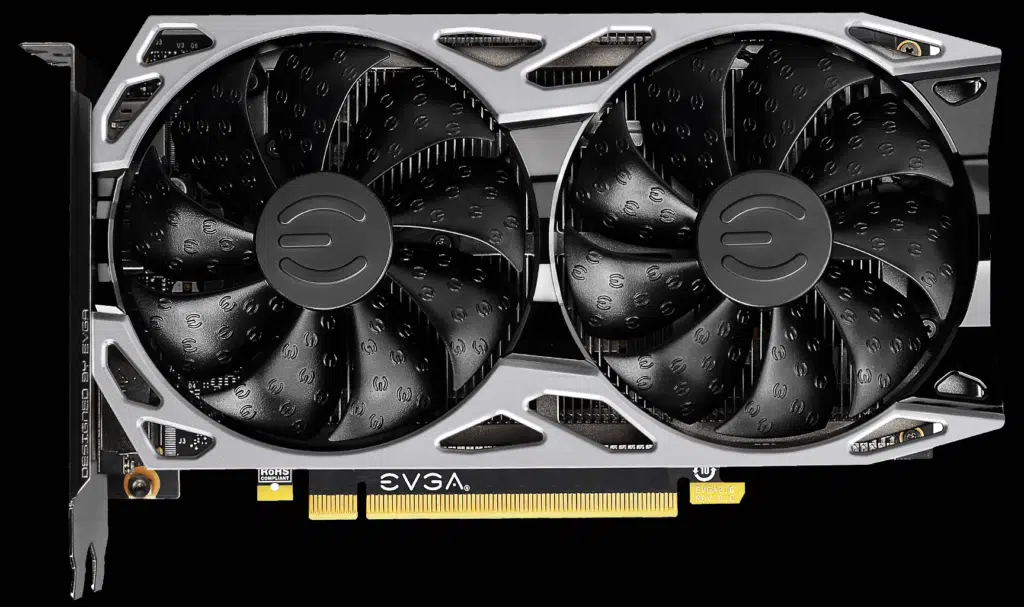
Introduction
On the testbed, today is an EVGA GeForce GTX 1650 SUPER SC ULTRA Gaming (04G-P4-1357-KR) featuring NVIDIA’s Turing-based TU116 but without the RTX components. This GPU is a lower-end product targeting budget gamers looking for a competent 1080p gaming GPU within the $160-$190 range. At the time of writing this article, you can find this GPU for $189.99 on EVGA’s web store. Not exactly as cheap as MSRP, but fairly in line with most AIB solutions.
EVGA supplies users with a 3-year standard warranty, which is also transferable to a second owner in a personal sale. EVGA also allows users to step up to another GPU, so long as they pay the difference between the two cards. While these features may not boost performance, they solidly help with end-user peace of mind, let alone flexibility in upgrades down the road. In 2020, with increased competition all around, we aim to find out if this GPU is still a worthy buy for a budget system. Is the GeForce GTX 1650 SUPER still good in 2020? Is the GeForce GTX 1650 SUPER good for gaming? Let’s find out.
GeForce GTX 1650 SUPER
NVIDIA released this GPU variant on November 22nd of 2019 as an upgrade to the vanilla GeForce GTX 1650 with faster RAM and more shaders in large part due to increased competition from cards like AMD’s Radeon RX 5500 XT. Within the TU116 we have 6,600 million transistors utilizing the 12nm process, 4GB of GDDR6 VRAM, 80 TMUs, 32 ROPs, and 1280 CUDA Cores. When comparing that to the original release of the GTX 1650, we see a lot of positive changes. This configuration increases bandwidth by up to 50%, and the CUDA cores are upped by 42% (1280 vs 896) giving you a fairly well-rounded bump over the TU117 silicon that powers the original GTX 1650.
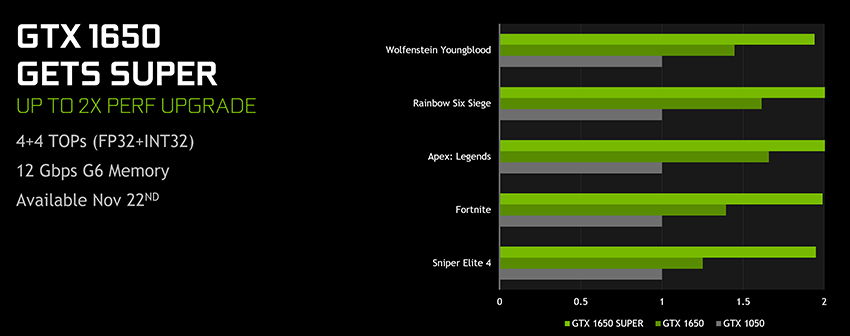
EVGA GeForce 1650 SUPER SC ULTRA Gaming
Our test card is a custom variant from EVGA with a dual-slot design dual fan with a full metal backplate and a fairly short PCB. The dimensions come in at an ITX case-friendly height of 4.38in/111.15mm and a length of 7.96in/202.1mm. EVGA has applied a very slight factory overclock to the GPU’s boost clock, giving users a 1755 MHz boost value out of the box. The reference boost clock is 1725 MHz by default, so this is a moderate boost clock increase. In today’s market, we have to question if that minor adjustment to boost clocks will be enough to keep this GPU competitive with other cards in its price range.
Memory consists of 4GB of GDDR6 on a 128-bit memory bus running at 12GHz. This provides 192GB/s of memory bandwidth. This matches the reference specification on GeForce GTX 1650 SUPER video cards. This however is an upgrade from the original GeForce GTX 1650 non-SUPER which utilized 8GHz GDDR5 memory and a memory bandwidth of only 128GB/s. The capacity of 4GB could be one weak point of the video card, especially at higher game settings at 1080p. Unfortunately, there are no 8GB variants.
The total power draw is 100 Watts, and the minimum PSU requirement is 350W. You will need an available 6-pin PCIe power connector.
Features
Being as this is a Turing-based GPU sans RTX, we can expect to get many of the other features found in higher-end cards within the lineup. With this card, you still get the benefits of NVIDIA’s NVENC Turing Encoder, which allows users to stream without placing so much stress on the CPU as the GPU handles the encoding within the hardware. This is a huge benefit to those of you looking to get your feet wet with streaming without destroying your bank account. You of course get features like G-Sync compatibility with compatible monitors, and EVGA supplies a metal backplate which gives the card more rigidity and a much more premium feel when compared to a card without one. When it comes to displaying outputs, we see EVGA has chosen to go with a Dual-Link DVI, HDMI 2.0b, and Display Port 1.4 connection, for a total of 3 outputs.

Photos
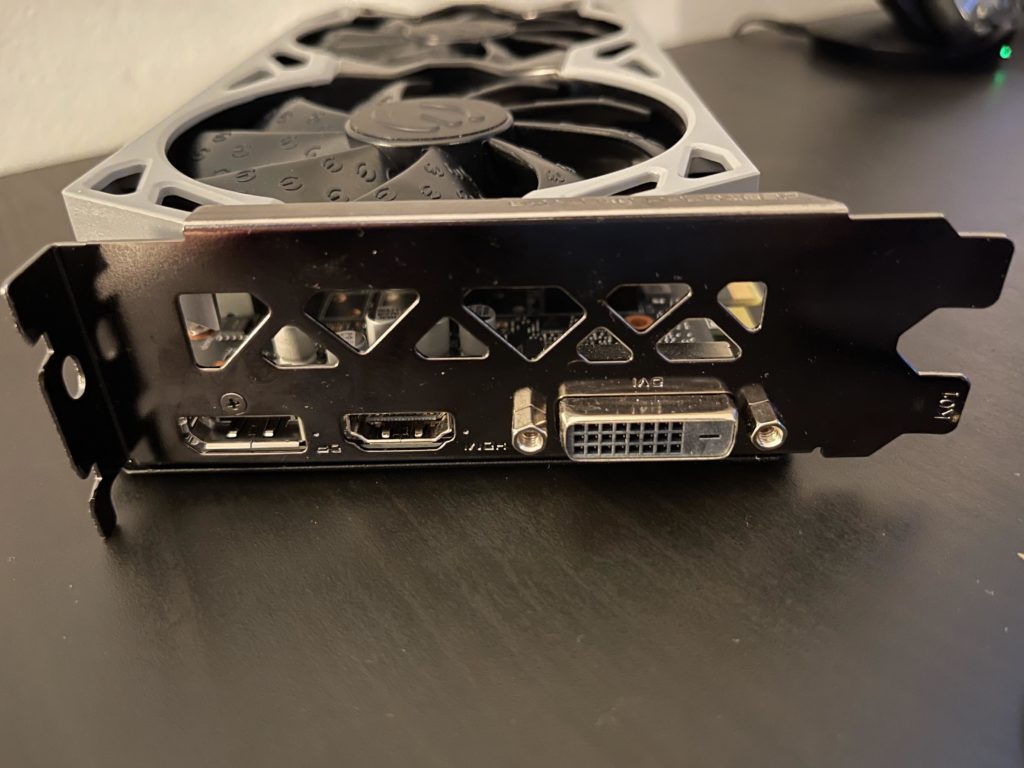
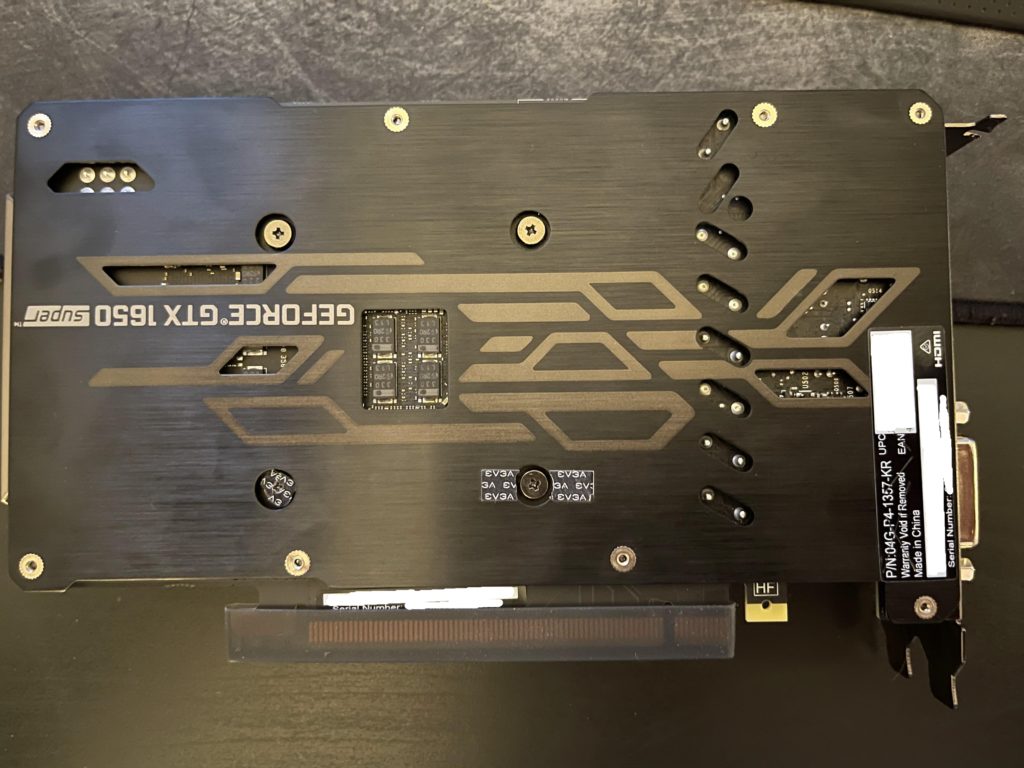

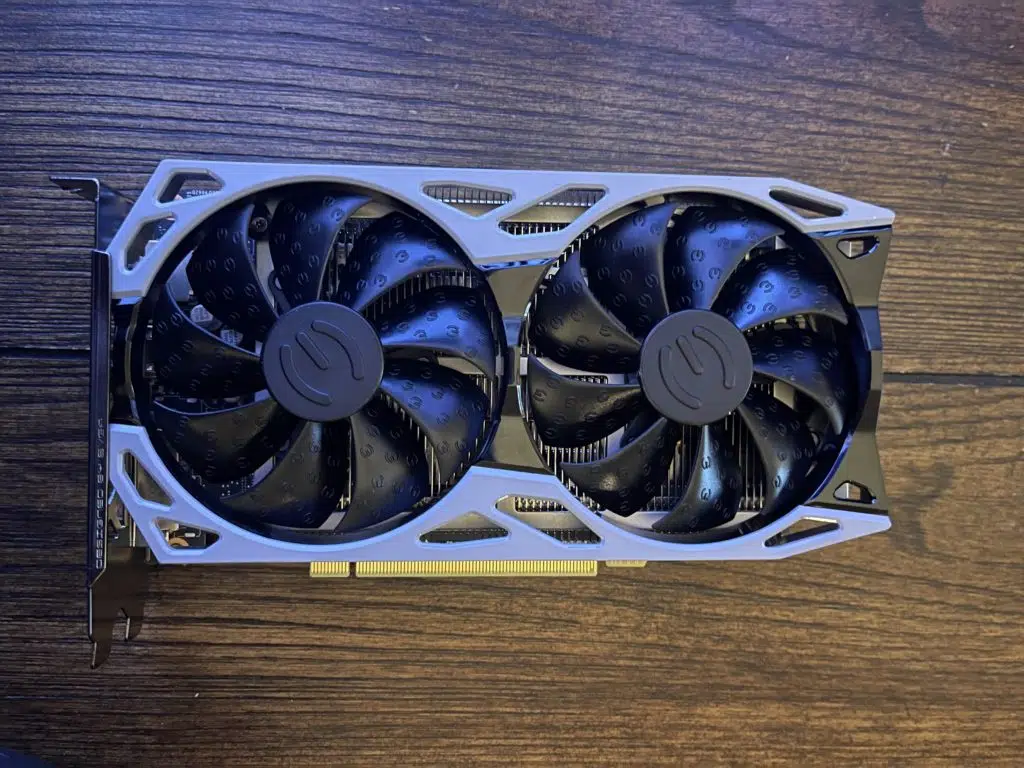
Comparisons
To compare with the EVGA GeForce GTX 1650 SUPER SC ULTRA Gaming we have chosen two video cards in the same segment to give it some competition and good comparison data points. The first card we are going to use is the XFX Radeon RX 5500 XT 4GB THICC II Pro video card. The Radeon RX 5500 XT GPU is the natural competitor to the GeForce GTX 1650 SUPER GPU. We have reviewed this video card recently and found it to be a worthy video card, it was in the $179 price range, which makes it a perfect price-to-price comparison with the EVGA video card.
Another video card we are using for comparison is the ASUS ROG STRIX GeForce GTX 1650 SUPER video card, which we have also reviewed. This video card has a higher boost clock of 1785 MHz and thus will be an interesting data comparison to the EVGA video card. It was priced lower, at launch, at $169. Naturally, prices right now have been fluctuating a lot with availability issues. At any rate, the ASUS video card will be an interesting comparison and we can see where the EVGA card ends up on performance and most importantly, overclocking.
